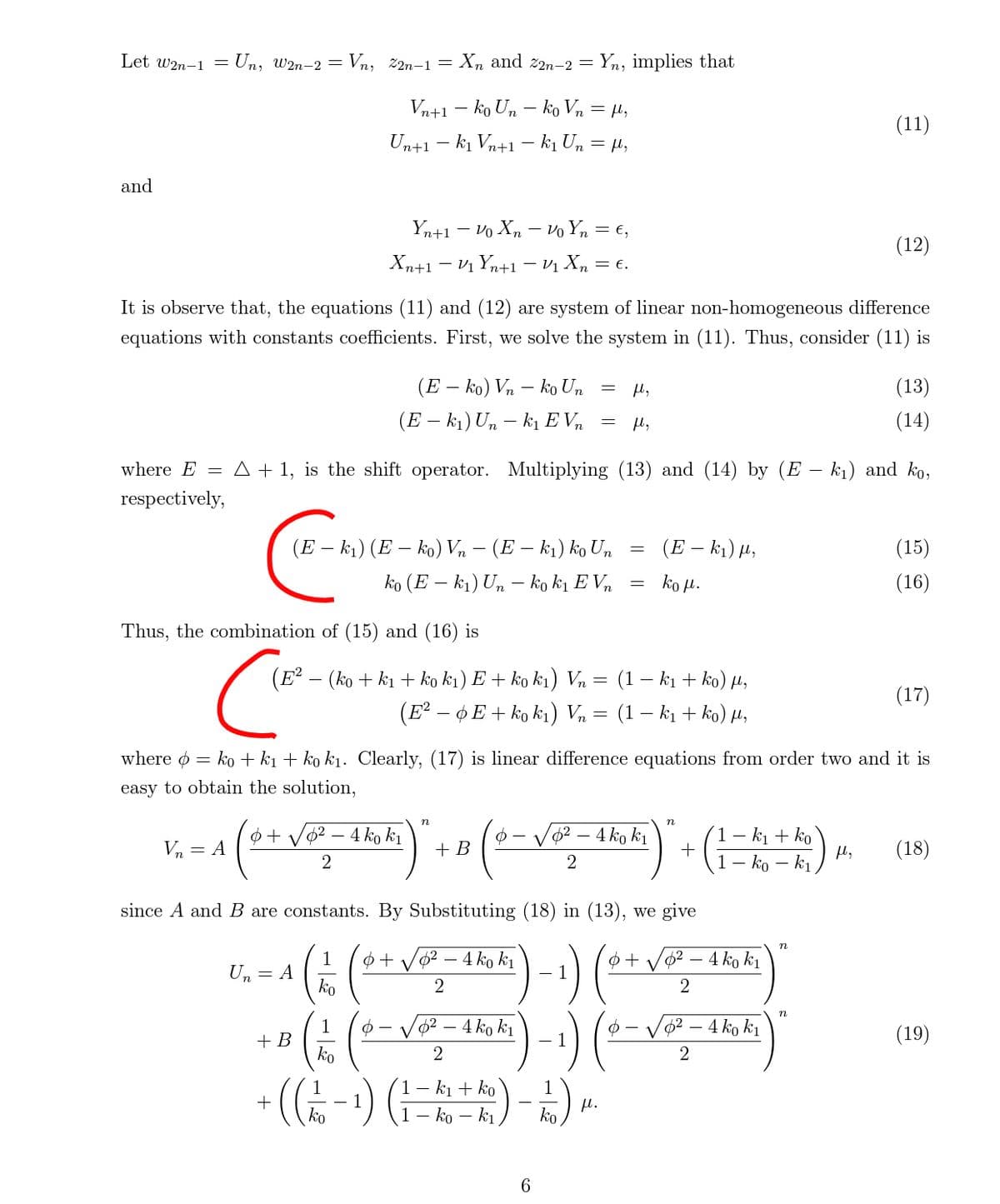Linear Algebra: A Modern Introduction
4th Edition
ISBN:9781285463247
Author:David Poole
Publisher:David Poole
Chapter2: Systems Of Linear Equations
Section2.4: Applications
Problem 27EQ
Related questions
Question
Show me the determine red and all information is here

Transcribed Image Text:Let w2n-1 = Un, W2n-2 = Vn, 22n–1 = Xn and z2n-2 = Yn, implies that
Vn+1 – ko Un – kio Vn = µ,
(11)
Un+1 – kį Vn+1 – kị Un = µ,
and
Yn+1 – Vo Xn – v Yn = €,
(12)
Xn+1 – Vị Yn+1 – V1 Xn = €.
It is observe that, the equations (11) and (12) are system of linear non-homogeneous difference
equations with constants coefficients. First, we solve the system in (11). Thus, consider (11) is
(E – ko) Vn – ko Un
(13)
(E – ki) Un – ki E V,
(14)
where E = A + 1, is the shift operator. Multiplying (13) and (14) by (E – k1) and ko,
respectively,
(E – k1) (E – ko) Vn – (E – k1) ko Un
(E – ki) µ,
(15)
ko (E – k1) Un – ko ki E V,
ko fH.
(16)
Thus, the combination of (15) and (16) is
(E²
(ko + ki + ko ki) E + ko k1) Vn
(1 – k1 + ko) µ,
(17)
(E? – o E + ko ki) Vn = (1 – k1 + ko) µ,
where ø = ko + k1 + ko k1. Clearly, (17) is linear difference equations from order two and it is
easy to obtain the solution,
n
ø + Vo? – 4 ko kı
6² – 4 ko k'1
(1– kị + ko
1 – ko – k1.
Ф —
-
Vn
= A
+ B
(18)
2
since A and B are constants. By Substituting (18) in (13), we give
1
Un = A
ko
- 4 ko k1
ф +
1
4 ko ki
2
2
6² – 4 ko k1
0² – 4 ko ki
Ф —
+ B
1
(19)
2
(G-)(
1– k1 + ko
+
1 — kо — ki,
H.
ko
6.

Transcribed Image Text:Zn-h
Wn-p
p=1
Wn-p
Zn-h
h=0
h=1
+ €,
(4)
p=0
+ µ and zn+1
Wn+1
Wn - u
Zn - €
where u and e are arbitrary positive real numbers with initial conditions w; and z; for i =
-2, –1,0.
Expert Solution
This question has been solved!
Explore an expertly crafted, step-by-step solution for a thorough understanding of key concepts.
Step by step
Solved in 2 steps with 2 images

Recommended textbooks for you

Linear Algebra: A Modern Introduction
Algebra
ISBN:
9781285463247
Author:
David Poole
Publisher:
Cengage Learning

Linear Algebra: A Modern Introduction
Algebra
ISBN:
9781285463247
Author:
David Poole
Publisher:
Cengage Learning